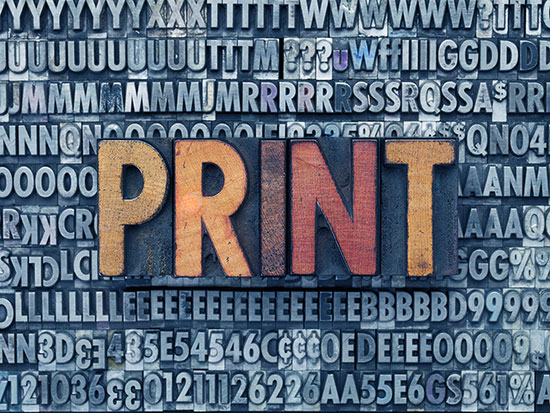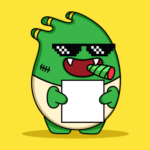

When you first get involved with an online printing company, you might encounter a number of terms you’re unfamiliar with. We’ve listed the most common of the bunch to hopefully take your print understanding to the next level.
Typography
Typography is the art of displaying textual information and language in a legible and appealing manner.
CMYK
The CMYK color model is a subtractive color model, used in most commercial color printing, and is also used to describe the printing process itself. CMYK refers to the four inks used in some color printing: cyan, magenta, yellow, and key (usually black).
RGB
RGB (red, green, and blue) refers to a system for representing the colors to be used on a computer or digital display. Many online print companies require you to convert the color mode of your RGB file to CMYK. What’s the big deal?
Dithering
Dithering is the attempt by a computer program, software or monitor to approximate a color by mixing other colors when a required color is not available.
Pantone
Pantone is a proprietary number system for matching colors, used in specifying printing inks for varying industries.
Color Theory
In the visual arts, color theory is a body of practical guidance for mixing and combining colors. There are also categories of colors based on the color wheel: primary color, secondary color and tertiary color.
Opacity
The condition of lacking transparency or translucence; opaqueness. In printing, this term is commonly used to describe papers. In design, the opaqueness (or transparency) of layers and objects can be modified.
Resolution (DPI and PPI)
In printing, DPI (dots per inch) refers to the output resolution of a printer or imagesetter, and PPI (pixels per inch) refers to the input resolution of a photograph or image. DPI refers to the physical dot density of an image when it is reproduced as a real physical entity, for example printed onto paper.
Brand Identity
A company’s brand identity is how that business desires to be perceived by consumers. The components of the brand (name, logo, tone, tagline, typeface) are created by the business to reflect the value the company is trying to bring to the market and to appeal to its customers.
Die Cut
The process of cutting areas of your printed design in various shapes to create unique effects. Die cuts are created after printing and are classed as a finishing process.
Foil Stamping
The heat-pressing application of foil to certain parts of a design to give them a shiny, metallic finish.
Letter Pressing
Letter pressing is the process of using metal plates to press a design into the surface of paper to create dimensional indentations.
Digital Printing
Digital printing refers to methods of printing from a digital-based image directly to a variety of media. It usually refers to professional printing where small-run jobs from desktop publishing and other digital sources are printed using large-format and/or high-volume laser or inkjet printers.
Solvent Printing
This term is used to describe any ink that is not water-based. Piezo inkjet printers whose inks use petroleum or a petroleum by-product such as an acetone like carrier liquid. “Eco-Solvent” inks usually contain glycol esters or glycol ether esters and are slower drying.
Screen Printing
Screen printing is a printing technique whereby a mesh is used to transfer ink onto a substrate, except in areas made impermeable to the ink by a blocking stencil. … One color is printed at a time, so several screens can be used to produce a multi-colored image or design.
Direct-to-Garment Printing
Direct to garment printing, also known as DTG printing, digital direct to garment printing, digital apparel printing, and inkjet to garment printing, is a process of printing on textiles and garments using specialized or modified inkjet technology.
Offset Lithography
Offset printing is a commonly used printing technique in which the inked image is transferred (or “offset”) from a plate to a rubber blanket, then to the printing surface.
Inkjet
Inkjet printing is a type of computer printing that recreates a digital image by propelling droplets of ink onto paper, plastic, or other substrates.
Xerography
Xerography, also known as electrophotographic, is a printing and photocopying technique that works on the basis of electrostatic charges. The xerography process is the dominant method of reproducing images and printing computer data and is used in photocopiers, laser printer s and fax machines.
Giclée
A technology for printing fine art or photograph reproduction using a high-quality inkjet printer to make individual copies.
If you think there are more terms we should add to this list, please let us know.

